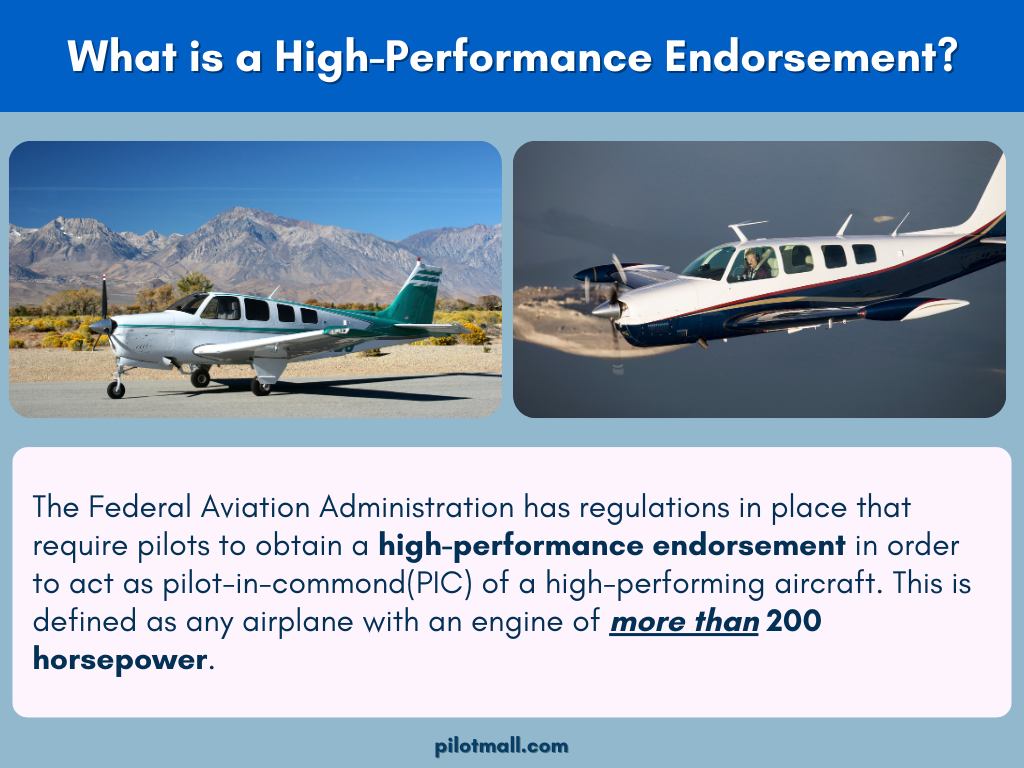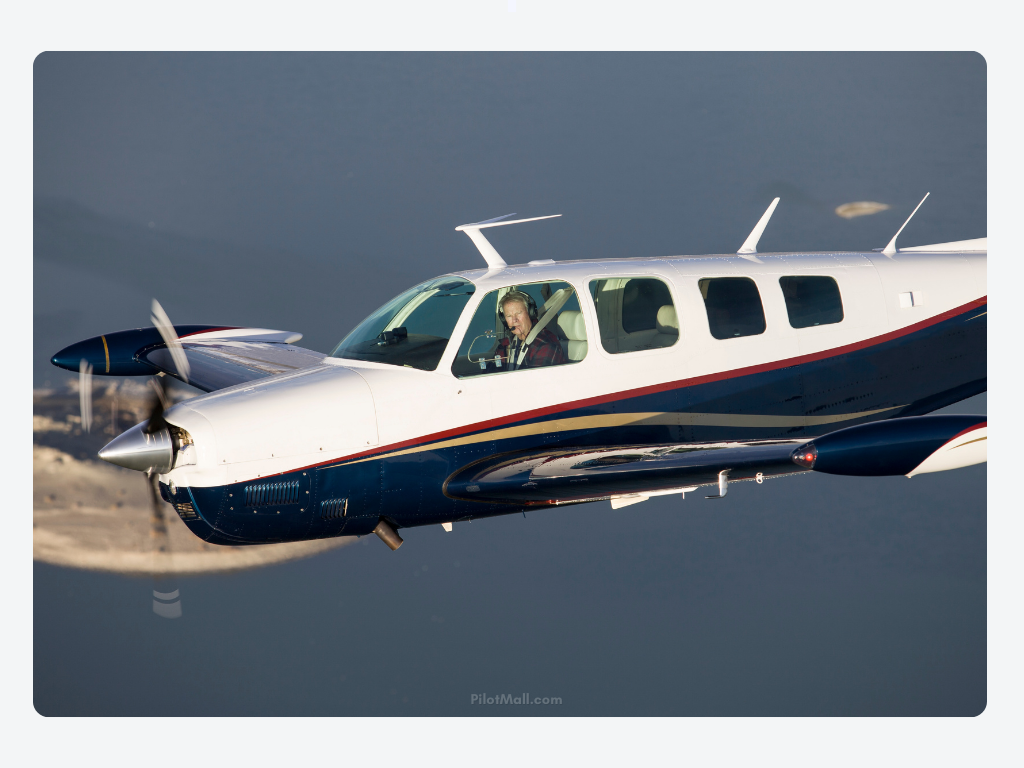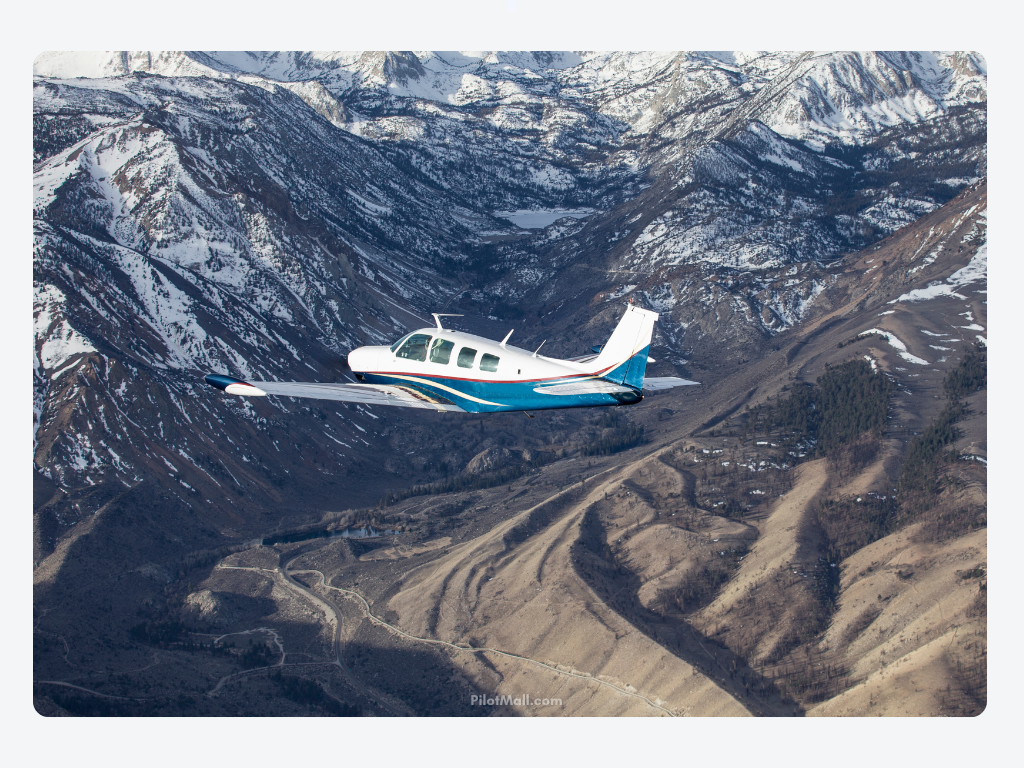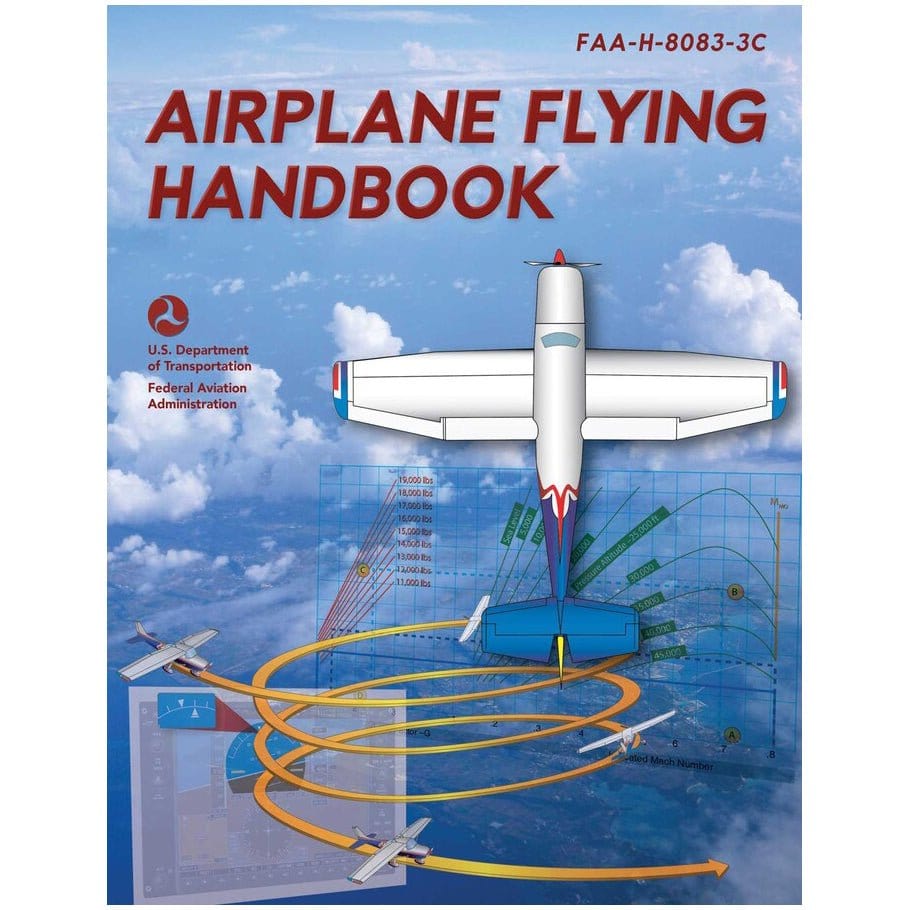The Beechcraft Bonanza, our beloved six-seat, single-engine aircraft, is still being manufactured by Beechcraft today, making it the longest continuously produced aircraft in history. If you aspire to fly or own this remarkable machine though, it's important to note that a high-performance endorsement is required.
In this guide, we will explain what exactly this extra endorsement involves, how to get it, and why it's worth obtaining. Let's go!
What is a High-Performance Endorsement?
The Federal Aviation Administration has regulations in place that require pilots to obtain a high-performance endorsement in their logbook in order to act as pilot-in-command (PIC) of a high-performing aircraft.
What is a high-performance airplane?
This is defined as any airplane with an engine of MORE than 200 horsepower. If an airplane has up-to 200 hp, then it does not qualify.
High-Performance and High-Altitude are Not the Same
It's important to not confuse a high-performance endorsement with a high-altitude aircraft. While both are found in 14 CFR 61.31(g)(1), high altitude requires additional training which is required for operating pressurized aircraft capable of operating at high altitudes.
High-Performance vs. Complex Aircraft Endorsement
This is another endorsement that might confuse pilots at first, high performance is related to the horsepower of the aircraft's engine, and complex is related to the complexity of operating the aircraft. A complex airplane is defined by 14 CFR 61.1(b) as an airplane that has the following:
-
Retractable landing gear
-
Flaps
-
Controllable pitch propeller
-
Including airplanes equipped with an engine control system consisting of a digital computer and associated accessories for controlling the engine and propeller
Steps to Earn a High-Performance Endorsement
If a pilot has kept up with their flight experience and currency, then getting the endorsement for high-performance aircraft should be a breeze.
The requirements to earn this endorsement are outlined in 14 CFR 61.31(f)(1)(i), which states:
Received and logged ground and flight training from an authorized instructor in a high-performance airplane, or in a full flight simulator or flight training device that is representative of a high-performance airplane, and has been found proficient in the operation and systems of the airplane; and Received a one-time endorsement in the pilot's logbook from an authorized instructor who certifies the person is proficient to operate a complex airplane.
This process is completed in three steps.
1. Ground School
Before flying, you will start off with ground training. Your instructor will teach aircraft systems, limitations, weight and balance calculations, emergency procedures, and more related to high-powered aircraft. They will also provide an outline for the flight training process.
2. Flight Training
Your flight instructor will start the practical training once you understand the ground training. This includes taxiing, takeoff, climb, cruise, descent, approach, and landing specific to high-performance airplanes.
3. Logbook Endorsement
Once you've gone through all the required flight training, your instructor will decide if you have mastered what is required. If everything checks out, a one-time stamp of approval will be put in your logbook.
This endorsement will certify that you have acquired the necessary training and can operate and understand the systems of high-performance airplanes.
Why Should You Get a High-Performance Endorsement?
Gaining a high-performance endorsement not only makes you an adept pilot, but it grants access to a wider variety of aircraft for purchase or rental.
The main purpose of the endorsement is to ensure that pilots possess the right skills and knowledge to take on the power and complexities of high-performance aircraft. Having this badge of skill in your logbook is something to be proud of.
How to Prepare for Endorsement Training
A high-performance endorsement is a recommended add-on to any recreational or aspiring professional pilot’s logbook and resume, you can begin to prepare for your endorsement by researching to find a flight training and aircraft that suits your needs and budget.
Be prepared to cover these ground training topics:
-
High-Performance Airplane System
-
Powerplant
-
Fuel system
-
Propeller
-
Engine cooling system
-
Electric trim
-
Environmental
-
Avionics
-
Airplane POH review
Be prepared to cover these in flight training:
-
Pre and Post Flight Checks
-
Cockpit familiarity
-
Start-up checklist
-
Taxi and run-up checklist
-
Take off, climb, cruise/descent power management(and manifold)
-
Short field take off & landings
-
Steep turns
-
Slow Flight & Stalls
-
Go-Arounds
-
Descent and approach planning
-
Power off approaches
-
Propeller governor failures/Overspeed
-
Recovery from unusual attitudes
-
Approaches, holds, and tracking(if IFR rated)
-
Autopilot

-
How long does a high-performance endorsement take?
In the average pilot training program, pilots can expect to spend between two to ten hours learning on the ground as well as four to eight hours flying a complex airplane. This process can be completed faster if a pilot had trained in a high-performance airplane prior to training for the endorsement.
-
What is the difference between complex and high-performance endorsement?
High performance is related to the horsepower of the aircraft's engine, and complex is related to the complexity of operating the aircraft. Many pilots will try to combine a high-performance and complex endorsement by flying an aircraft that suits both of these areas.
-
How many hours do you need for a high-performance endorsement?
While there isn't a set hour requirement, the training typically runs between 1-10 hours based on a pilots learning capabilities.
-
What defines a high-performance aircraft?
This is defined as any airplane with an engine of MORE than 200 horsepower, such as a Cessna 182 or a Beechcraft Bonanza.
-
Can you log high-performance time without endorsement?
Yes, you can log flight time as long as there is a pilot or flight instructor on board who can act as PIC of the aircraft that does have the endorsement. Even with logging high-performance-time, this does not qualify a pilot to rent/fly an aircraft of this qualification on their own until they obtain an endorsement.
-
How much will my endorsement cost?
To receive ground and flight training you are looking at around 1-10 hours of training. The cost will be the aircraft rental fee plus the instructor fee per flight hour. A high-performance airplane tends to rent for around $170-$200 per flight-hour-dry (not including fuel costs) and the instructor fees run between $40-$65 an hour.
We recommend checking out this airplane flying handbook:
Takeaway
Becoming a pilot is an incredible adventure, and obtaining a high-performance airplane endorsement is a thrilling milestone. In a world where many pilots dream of pushing the limits in the cockpit of complex and high-performance aircraft, this endorsement unlocks the door to a realm of excitement and mastery.
Under the guidance of an authorized instructor, it's an opportunity to grow in skills and proficiency, mastering the complexity of engine-producing powerhouses.
If you've ever dreamt of operating high-performance airplanes, take the leap and earn that high-performance airplane endorsement—the skies have never looked more inviting!
Want to know more about High-Performance Aircraft?
Check out these links to learn more about complex aircraft!
Did you find this article helpful?
Do you think we missed anything important? Let us know in the comments below!












